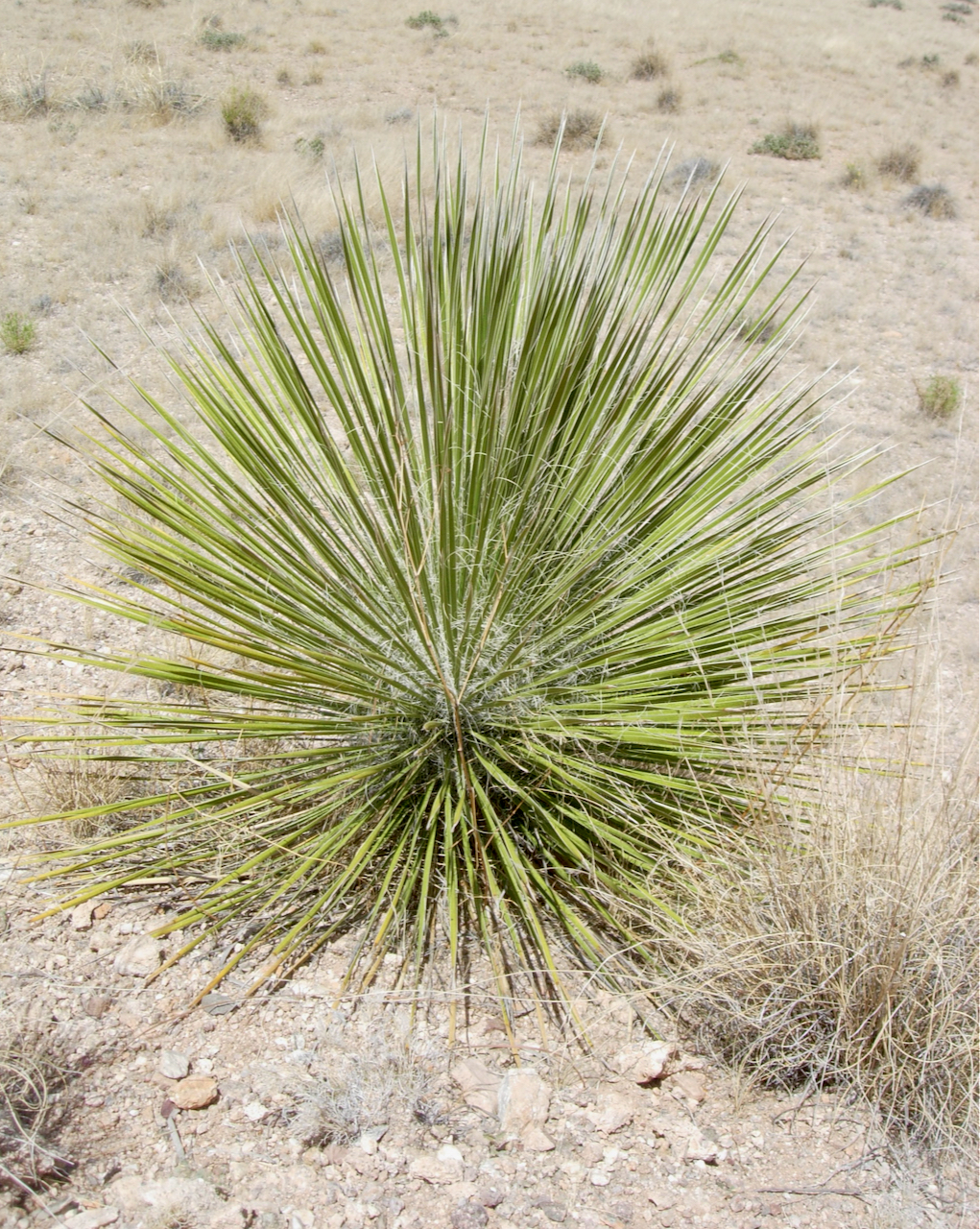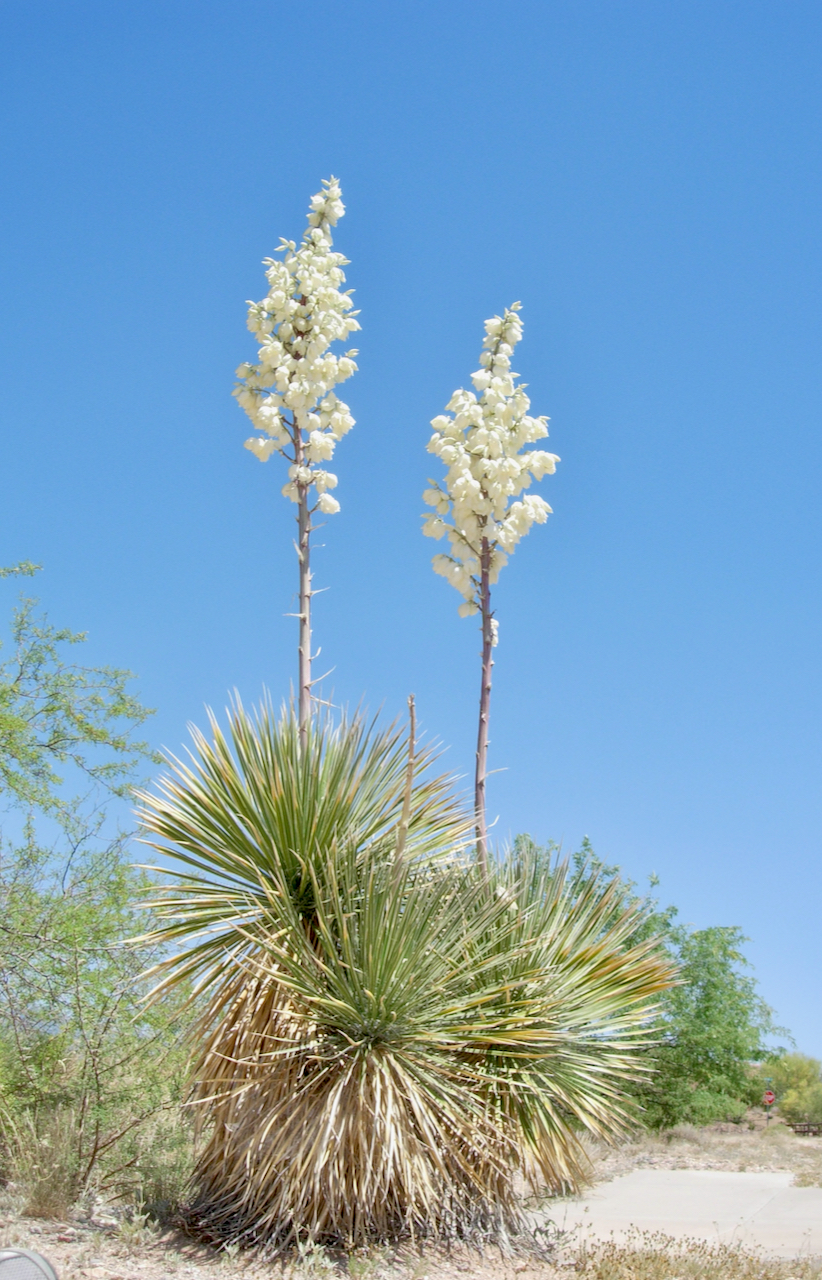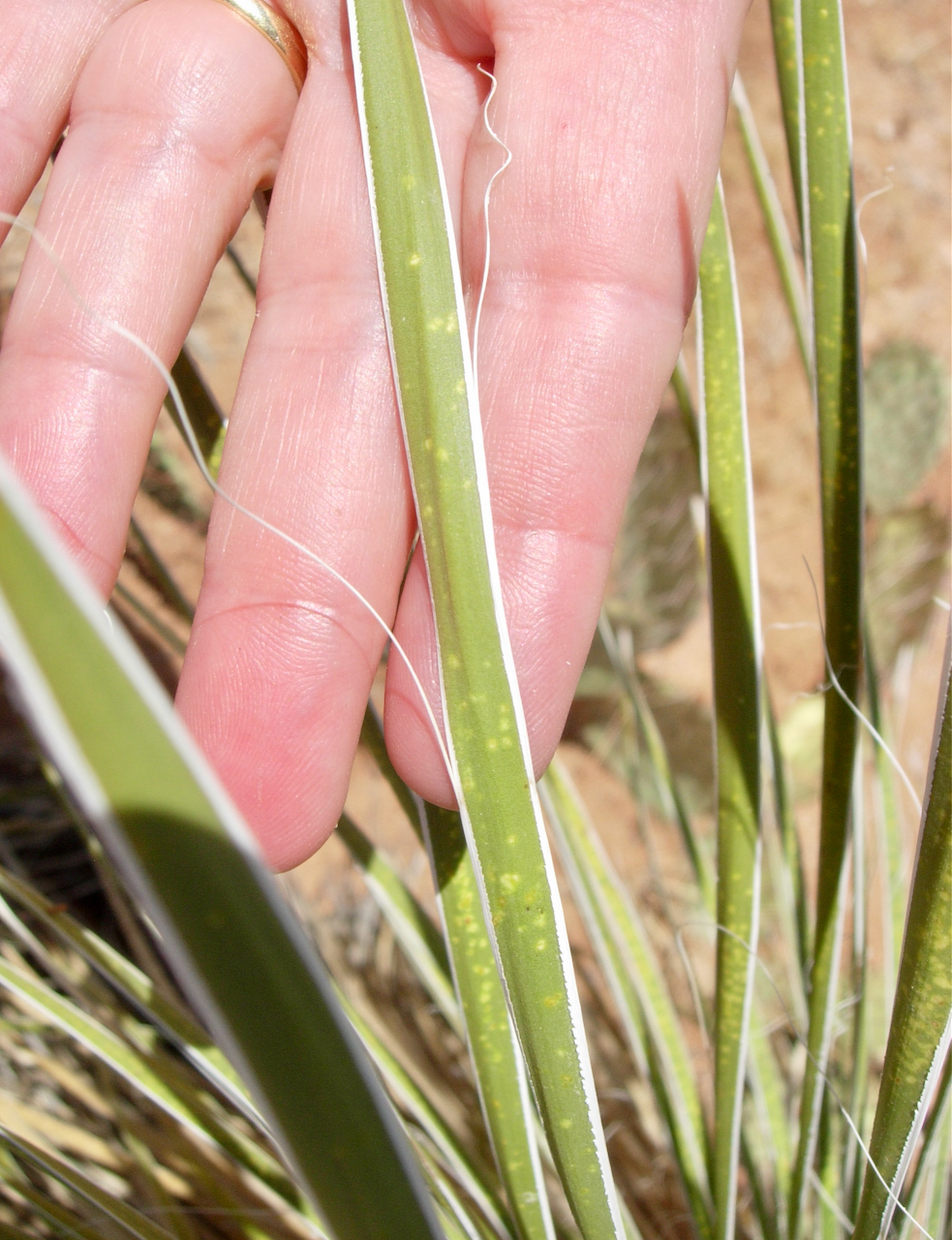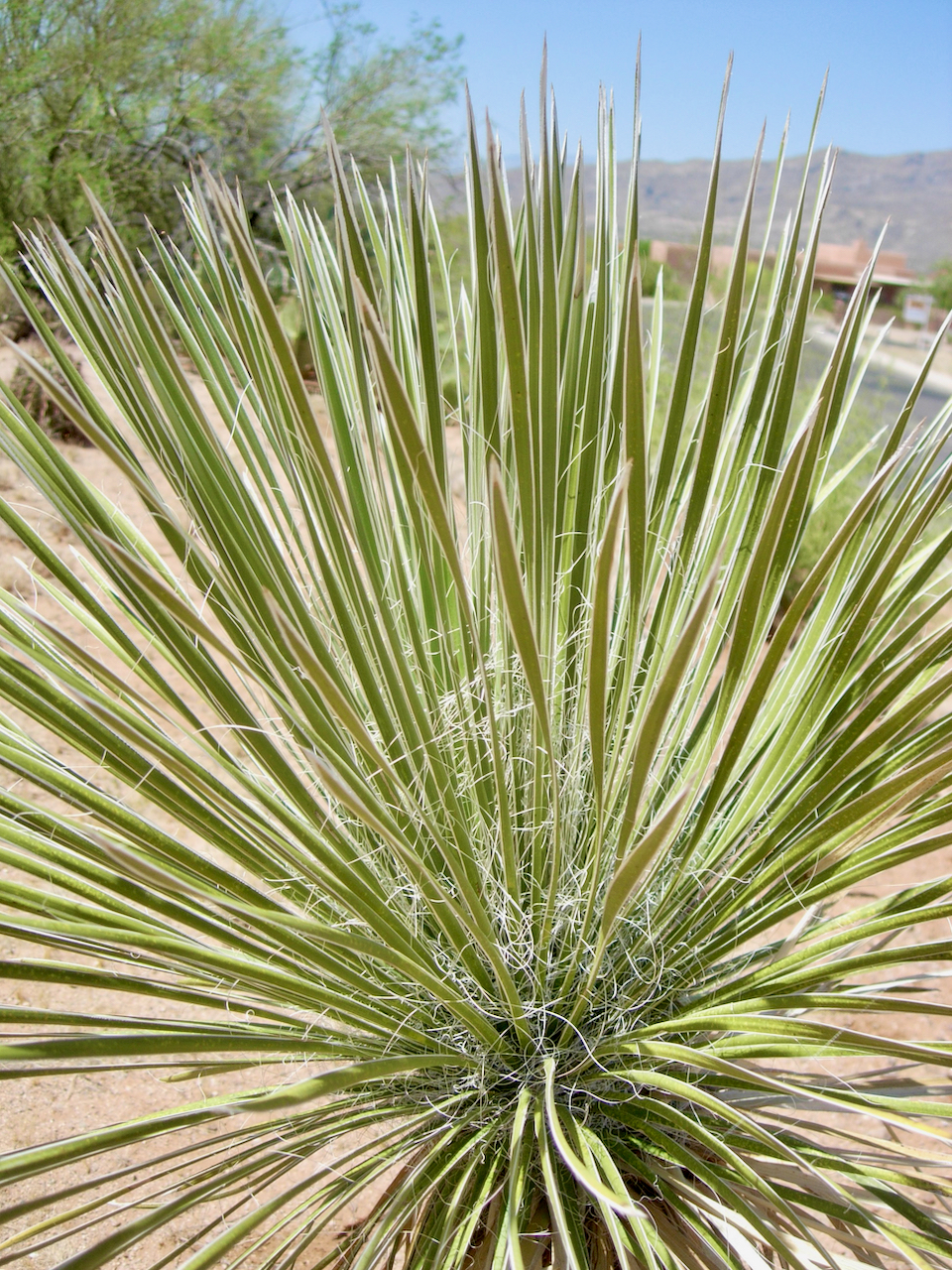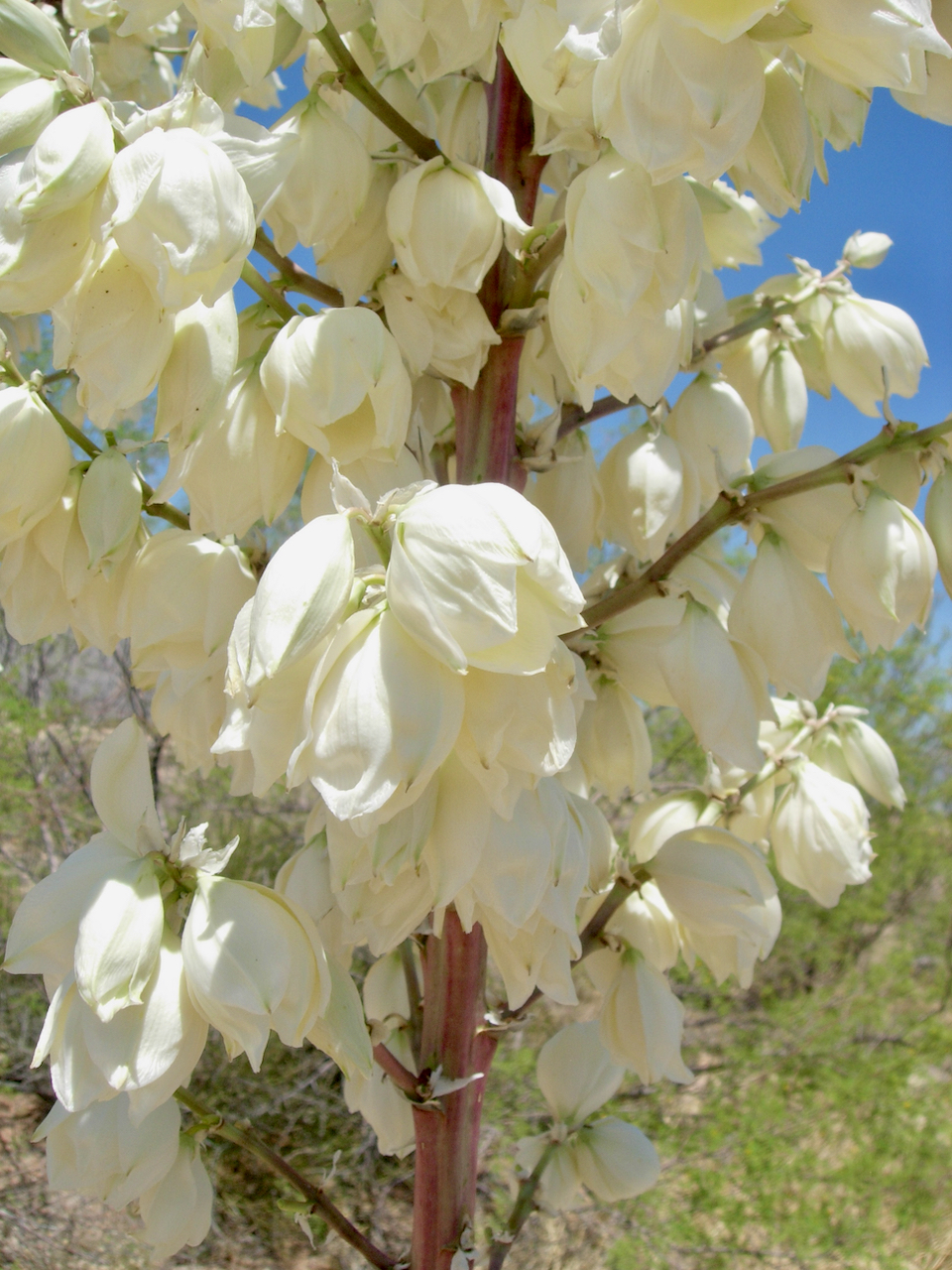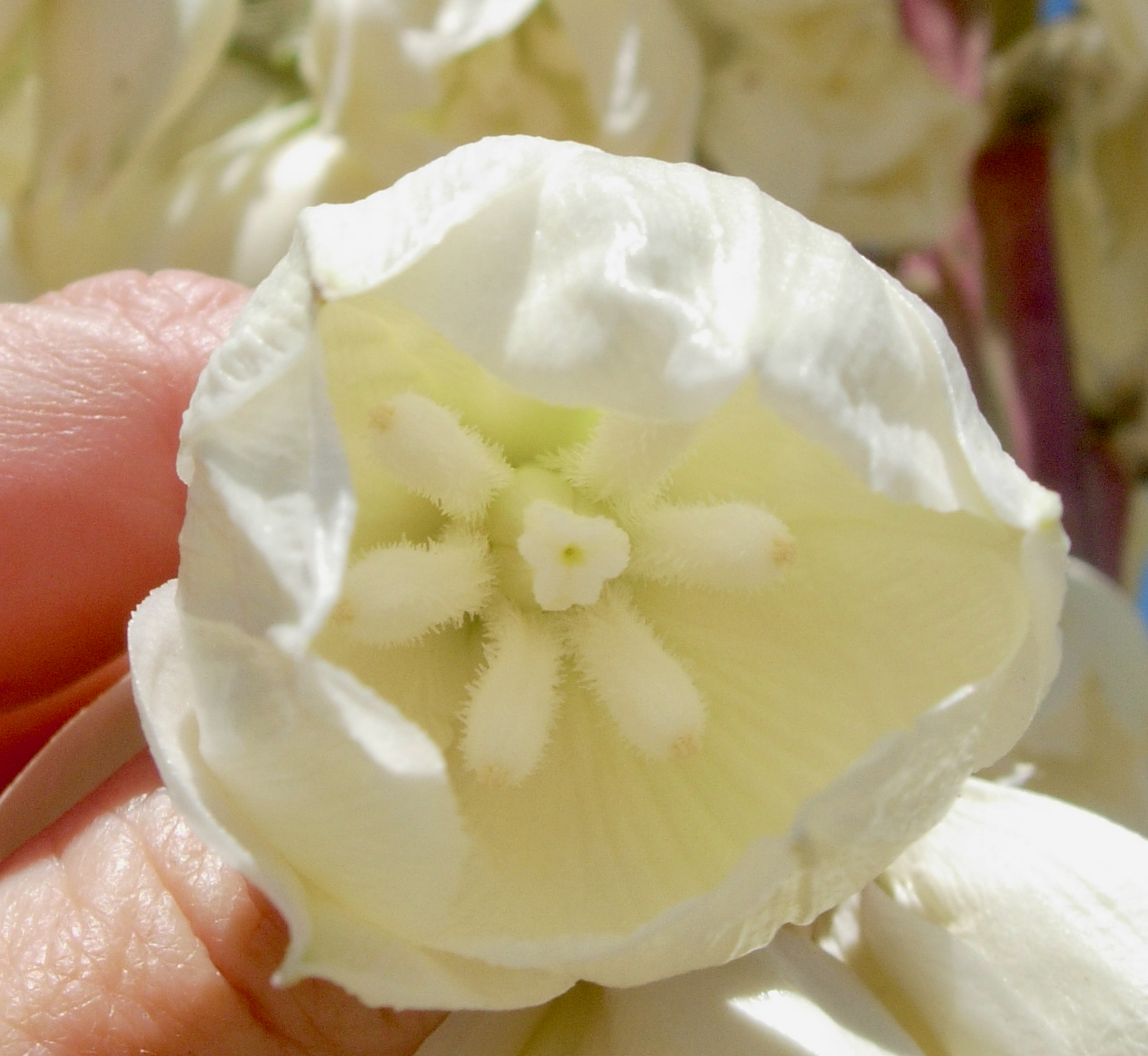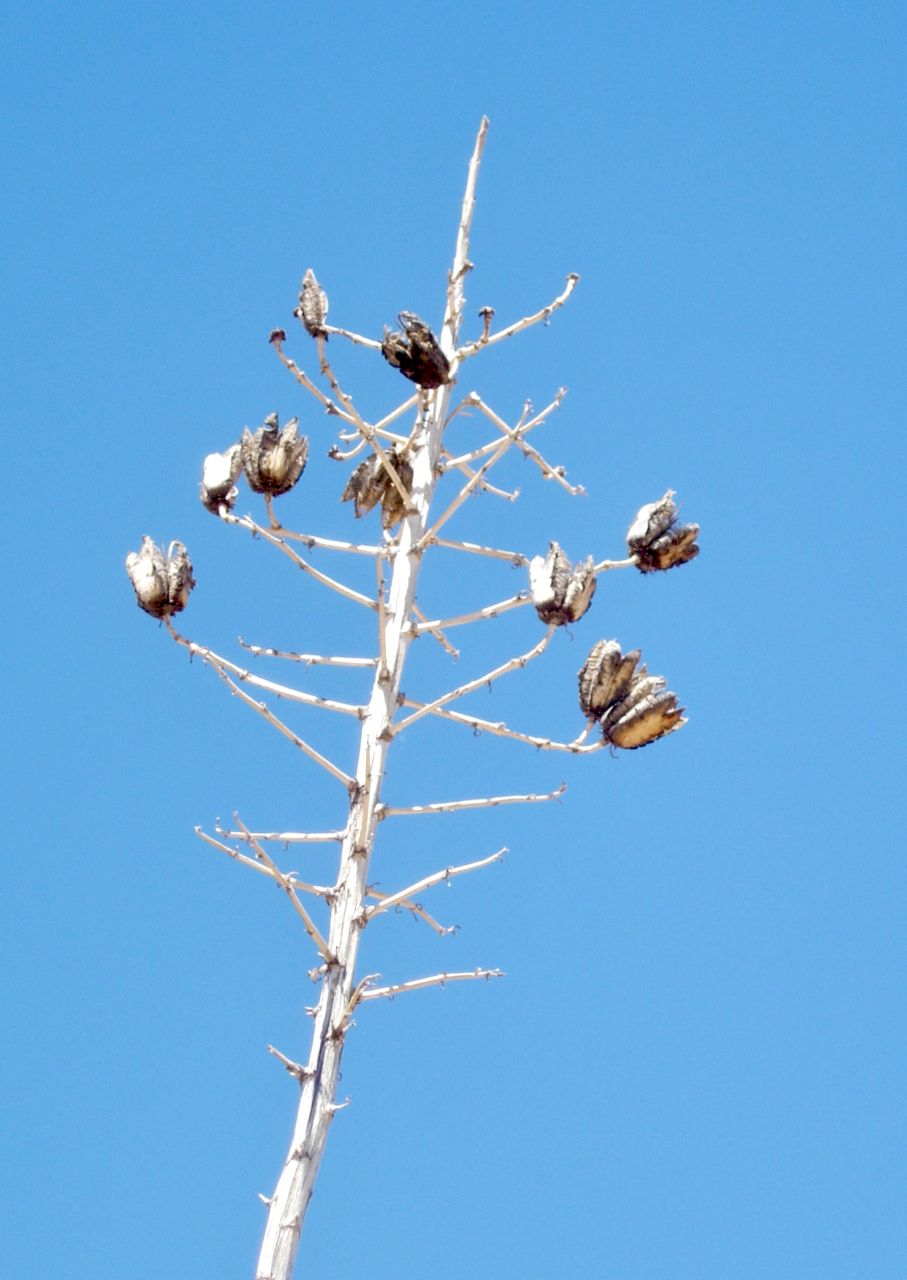Soaptree Yucca
Yucca elata
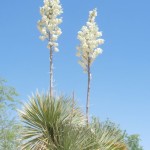
About the Plant
Soaptree yucca is native to southern Arizona and New Mexico, one of the most common yucca in the Tucson area. Though initially a low plant, mature specimens can reach to 10-15 feet and have multiple stems. This plant does not flower every year. When it does, the flower stalk reaches 3-7 feet with all the large creamy-white flowers held well above the foliage.
Grow soaptree yucca in full sun and well-drained soil. New plants should be watered in summer until well established but avoid overwatering, especially in winter. Resist the urge to "improve" their appearance by pulling off dead leaves on the lower trunk. Those leaves provide protection from sunburn, cold, and insect infestation. This yucca is quite cold tolerant, to -10°F.
Distinguish soaptree yucca from agave and other yucca by its thin, flat leaves, absence of spines on the edges of the leaves, and by its white leaf edges that often shred and curl.
Notes:
- This yucca was widely used by native peoples. See the Weekly Plant article for more details.
- Soaptree yucca is an Arizona Protected Plant.
Wildlife value: The flowers are pollinated exclusively by yucca moths.
More Information
Weekly Plant on soaptree yucca
Horticultural information from ASU
Technical botanical description from SEINet
In books:
Native PLants for Southwestern Landscapes by Judy Mielke, page 276
Agaves, Yuccas, and Related Plants by Mary & Gary Irish, page 241
